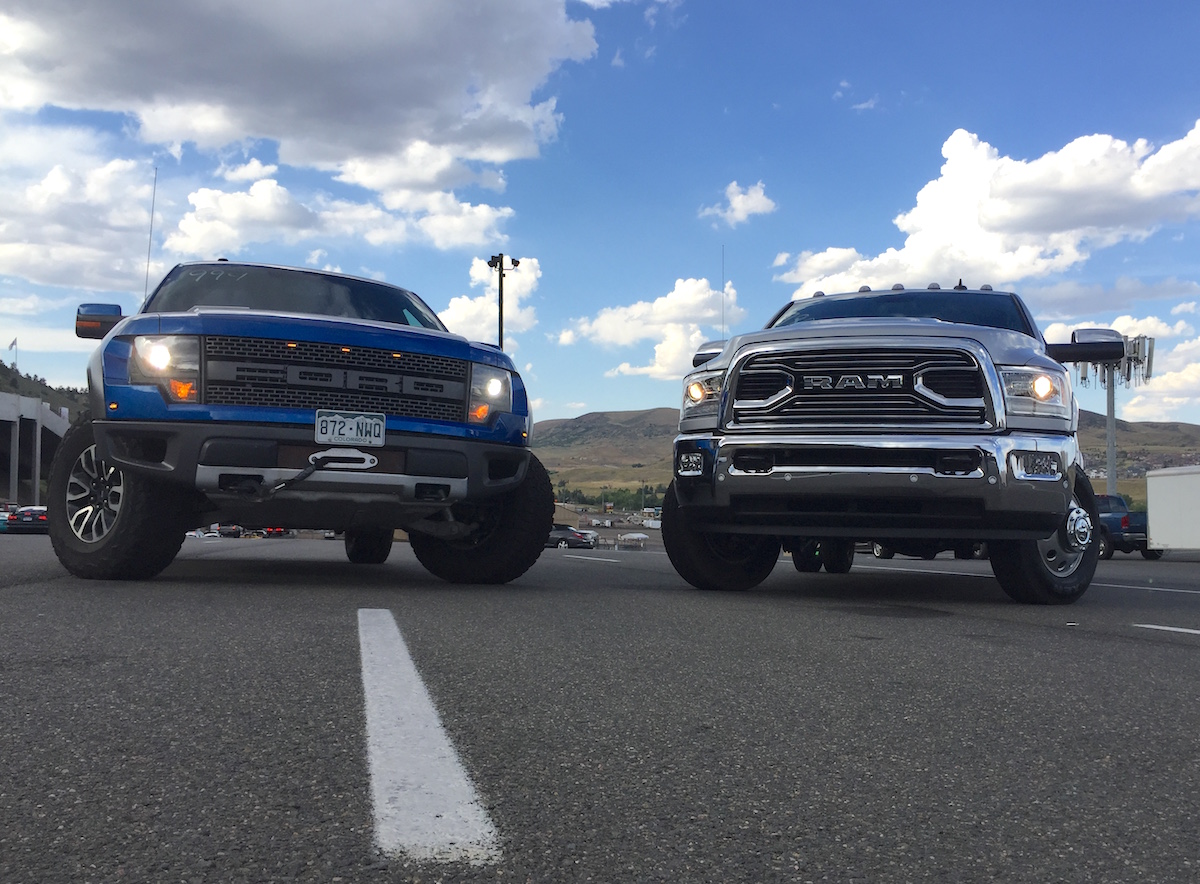
We get this question every week: “Which pickup truck should I get to tow my trailer?” or “How heavy of a trailer can my truck tow?”. This is a step-by-step guide to answer this popular question without getting into the specifics of each particular truck.
We get this question so often, that it is also part of our Truck Nuts Book that Kent “Mr Truck” Sundling and I cowrote. The book covers many other topics and has a few truck stories as well. We are very proud that the book has been in top 3 Automotive Guides on Amazon for the last several weeks.
Trailer Size and Weight
What is the Gross Vehicle Weight Rating (GVWR) of your trailer? You will be able to find this number on the trailer “vin plate” or by contacting the trailer manufacturer. The GVWR is the dry weight of the trailer (empty weight) plus the maximum allowed payload. Your trailer may be as little as a 12-ft pop-up camper with a GVWR of under 3,000 lbs. Perhaps, it’s a behemoth conventional camping trailer that is 40-ft long and approaching 14,000 lbs GVWR. How about a triple-axle 43-ft long 5th-wheel toy hauler that is pushing a total weight rating of 20,000 lbs? It may be a large boat, a cargo trailer, or a horse trailer.
Figure out the GVWR of the trailer, as well as the loaded weight of your specific setup. Presumably, you will not be towing a maxed out trailer all the time?
Trailer Tongue or Hitch Weight
All trailer manufactures specify (or should specify) the tongue or hitch weight of the trailer when empty. It’s either a precise number or a percentage of the empty trailer weight. Empty trailer weight is also referred to as Unloaded Vehicle Weight (UVW). Tongue weight generally starts at 10% of the UVW for conventional (aka. bumper-pull) trailer. It goes up to about 25% for 5th-wheel or gooseneck trailers. You cannot assume that all conventional trailers have a 10% tongue weight out of the box. For example, empty toy hauler trailers tend to be heavier on the tongue.
Towing safety dictates that a loaded conventional trailer should have approximately 10% tongue weight. A loaded gooseneck should be around 15% hitch weight. A loaded 5th-wheel trailer should push down on the truck with 20-25% hitch weight.
If the tongue or hitch weight is too low, it would likely result in excessive trailer sway. If the tongue or hitch weight it too heavy, it may overload your towing vehicle and/or cause it to squat too much.
Class of Truck (Payload and Towing)
Naturally, the larger and heavier your trailer gets, the bigger your towing pickup truck needs to be. This guide is focused on pickup trucks, but this will apply to any towing vehicle: crossover, SUV, or sedan.
In the US, truck classification is determined by the vehicle’s GVWR. The classification ranges from 1 to 9. Class 1 represent the midsize pickups, such as the Toyota Tacoma and the Chevy Colorado. Class 2a trucks are “half-tons” or 1500 series pickups: Ford F-150 or Ram 1500. Class 2b are the “three-quarter ton” trucks. Class 3 are the one tons: single rear wheel and dually. It keeps going up to Class 8 for “semi” trucks, and Class 9 for extra-heavy semi trucks.
Each truck has a maximum payload and towing ratings. Manufacturers use the J2807 Society of Automotive Engineers (SAE) standard for testing and verifying towing and hauling ability of pickup trucks.
Keep in mind that the maximum towing rating in the manufacturer commercial or their website refers to a truck with a very specific configuration. It’s usually a 2WD model with a shorter cab and a longer bed setup. Every manufacturer publishes specific towing guides that show rating for every cab, bed, and powertrain combination.
In general, the bigger and heavier the truck (HD diesels excluded), the less towing capacity and payload the truck can carry. This is because each truck has its own GVWR and Gross Combined Weight Rating (GCWR) for the truck and trailer combination.
Truck’s Axle Ratio
Other than the engine and the transmission, the truck’s rear axle ratio is often a deciding factor for its towing and payload rating. In general, the higher the numeric number (ratio: 4.10 or 4.30) – the higher the towing rating. Once again, please check the manufacturer towing guides for precise rating.
Truck’s Wheelbase
A big and heavy trailer is more susceptible to sway due to cross winds or improper load distribution. A pickup truck with a longer wheelbase (crew cab long bed) has a better chance to control the sway and make towing more enjoyable. A heavy duty truck with a long 8-ft bed can handle more variations of 5th-wheel or gooseneck trailers. The extra length allows the driver to make tighter turns (jack-knifing the truck and trailer) without the trailer coming in contact with the cab of the truck. A truck with dually rear wheels is wider and thus provides more stability as well.
Truck’s Height
Specific to 5th-wheel or gooseneck trailers, the height of the truck’s bed and the height of the trailer hitch or neck need to match in order to allow the truck and trailer to be level and for the trailer to clear the bed of the truck. 5th-wheel and gooseneck trailers have some height adjustment, depending on the type of coupler and hitch.
Maxing It Out?
Your half-ton truck is rated to tow a maximum 9,000 lbs. Should you get a 9,000 lbs trailer and max the truck out? Will the 900 lbs tongue weight overwhelm the truck that is also carrying people and extra gear? We recommend leaving about 10% safety margin. If the truck is rated to tow 9,000 lbs, then you should be comfortable towing a trailer that weighs about 8,000 lbs. This allows a little more breathing room for payload, and the engine, transmission and brakes will not have to work as hard.
















![Which is More Reliable: 3.5L EcoBoost or 5.0L V8? [Reader Question] Second-generation 3.5-liter EcoBoost engine](https://tfltruck.com/wp-content/uploads/2016/05/Second-generation-35-liter-EcoBoost-engine.jpg)
![Which Silverado Engine to Get: 5.3L or 6.2L V8? [Ask TFLTruck] 2016 chevy silverado](https://tfltruck.com/wp-content/uploads/2015/10/2016-chevy-silverado-grille.jpg)
